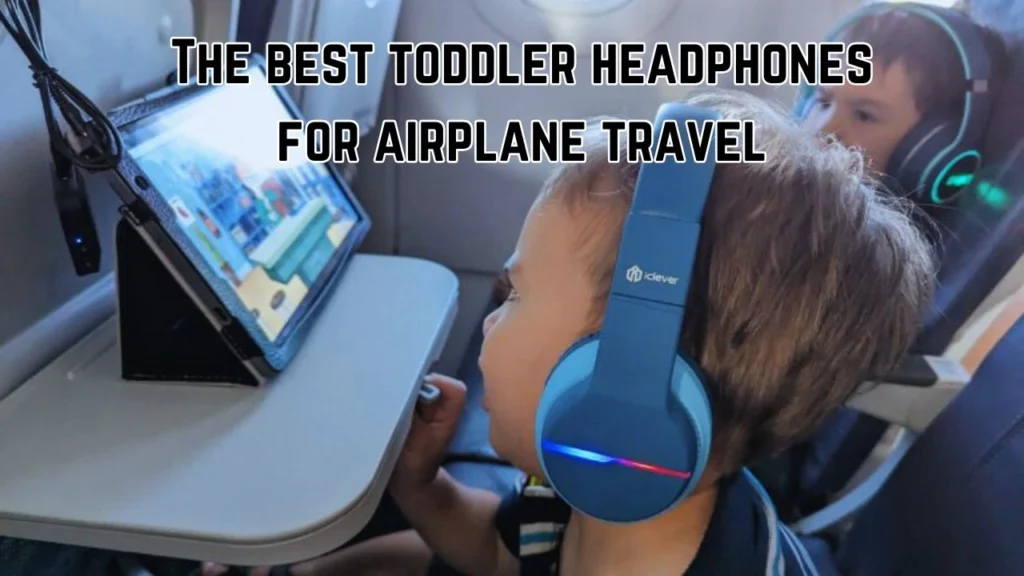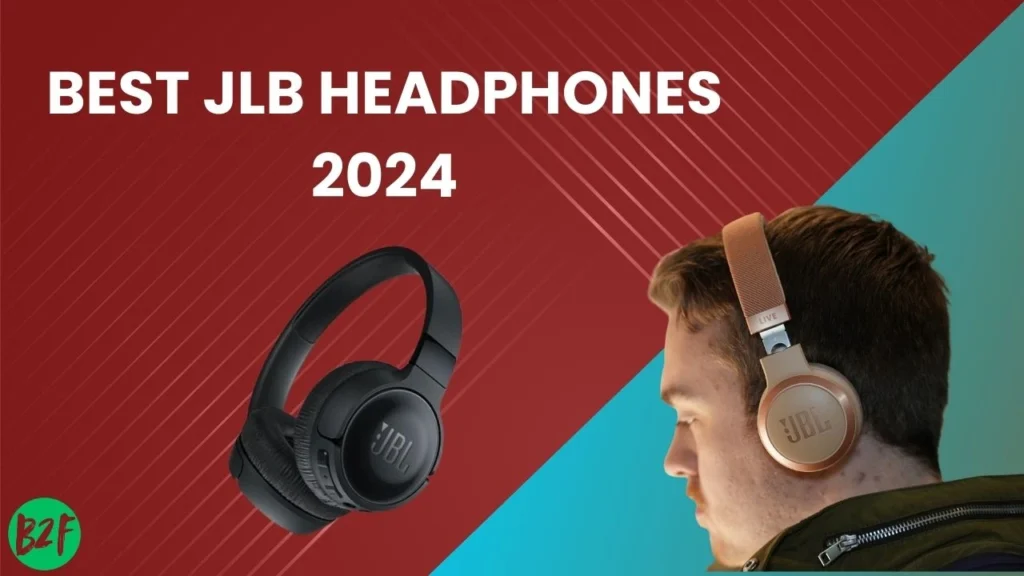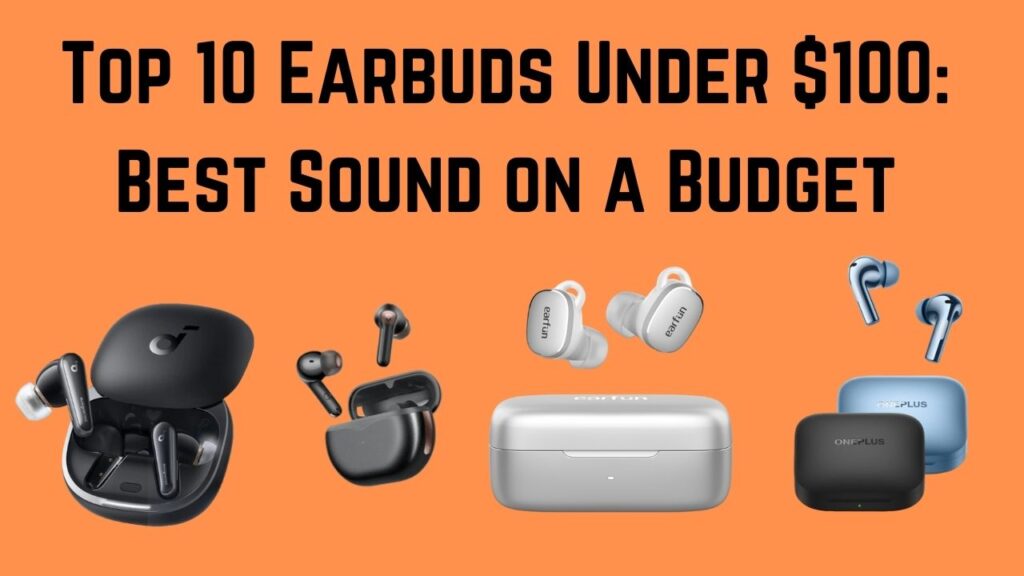Introduction
Travelling with toddlers can be a delightful yet challenging experience, especially during long flights.
Kids headphones are essential for creating a comfortable and enjoyable audio experience, especially during school or travel. The best kids headphones for school combine durability with safe volume control.
Ensuring your child’s hearing is protected while staying engaged. For parents seeking quality trip options, toddler-wired headphones with a microphone offer an added layer of functionality, allowing clear communication during online classes or virtual activities.
In 2024, we’ll explore the best toddler headphones for aeroplane travel, focusing on safety, comfort, and functionality.
Why Choose Toddler-Specific Headphones?
Standard adult headphones are unsuitable for young children due to their size and potential to produce high volume levels that can harm developing ears.
Toddler-specific headphones are designed with features such as volume limiting, comfortable fit, and durable materials to ensure a safe and enjoyable listening experience.
Features to Consider
When selecting the best headphones for your toddler’s aeroplane travel, consider the following features:
1. Volume Limiting
To protect your child’s hearing, opt for headphones with a built-in volume limiter that caps the sound at a safe level, typically around 85 decibels (dB).
This feature prevents the volume from reaching levels that could cause hearing damage.
2. Comfort and Fit
Look for headphones with adjustable headbands and cushioned ear pads to ensure a snug and comfortable fit for your child.
A proper fit minimizes discomfort during extended use and helps keep the headphones securely in place.
3. Durability
Children can be rough with their belongings, so choose headphones made from sturdy materials that can withstand drops and bends. Sturdy construction guarantees long-lasting use, making them a valuable investment.
4. Wireless vs. Wired
Wireless (Bluetooth) headphones eliminate the hassle of tangled cords and provide freedom of movement, particularly during travel.
However, ensure they have a long battery life to last through the flight. Wired headphones, on the other hand, don’t require charging and can be more reliable in terms of connectivity.
5. Noise Cancellation
Active noise cancellation (ANC) can be advantageous in noisy environments like aeroplanes. It allows your child to enjoy audio content without increasing the volume to unsafe levels.
However, incorporating ANC can increase the headphones’ cost and weight.
Top Toddler Headphones for Airplane Travel in 2024
Based on the above criteria, here are some top-rated toddler headphones suitable for airplane travel:
1. Puro Sound Labs PuroQuiets
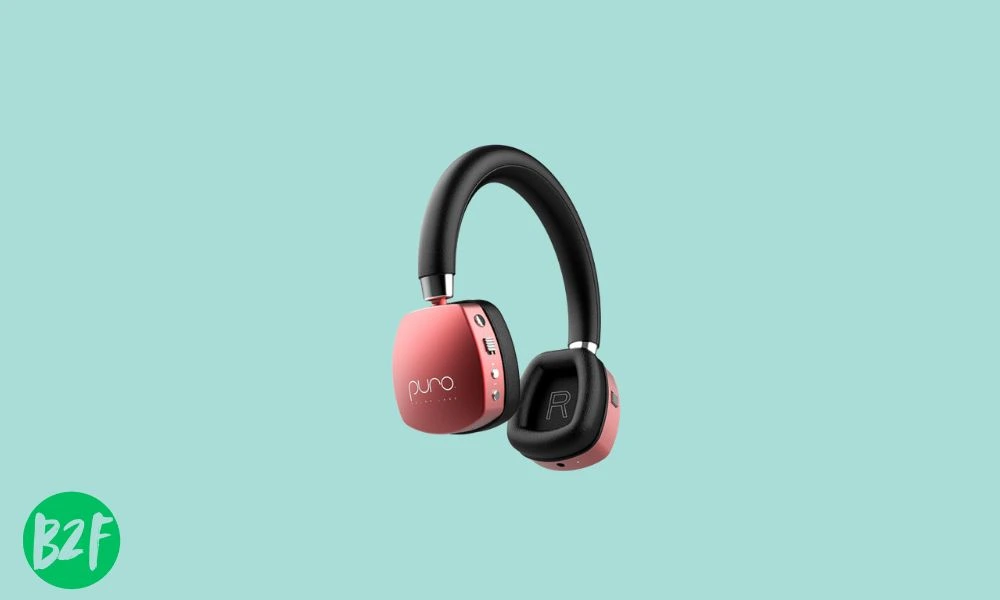
The PuroQuiets are renowned for their effective noise cancellation and volume-limiting features, making them ideal for aeroplane travel. They provide a snug fit with soft ear cushions and an adjustable headband.
The wireless design provides up to 35 hours of playtime, or 23 hours with active noise cancellation turned on.
Pros:
- Effective noise cancellation
- Volume limited to 85 dB
- Long battery life
- Comfortable fit
Cons:
- Higher price point
2. ONANOFF BuddyPhones School+ Wireless
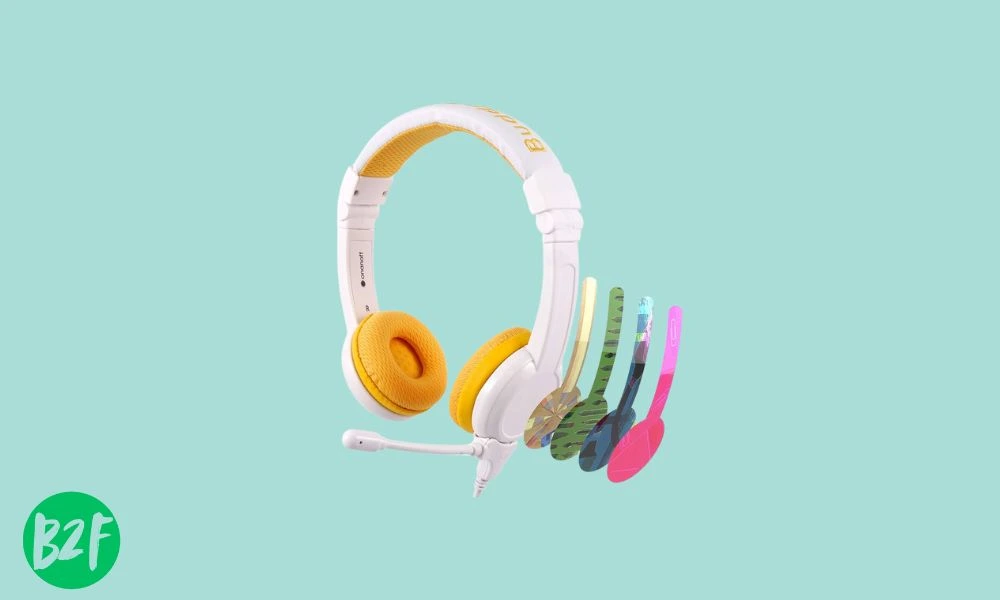
These headphones have multiple volume-limiting modes and an easy-to-use boom microphone, making them suitable for entertainment and educational purposes during travel. Their wireless connectivity and durable design add to their appeal.
Pros:
- Multiple volume-limiting modes
- Detachable boom microphone
- Durable construction
- Wireless connectivity
Cons:
- Microphone only usable in wireless mode
3. JLab JBuddies Studio
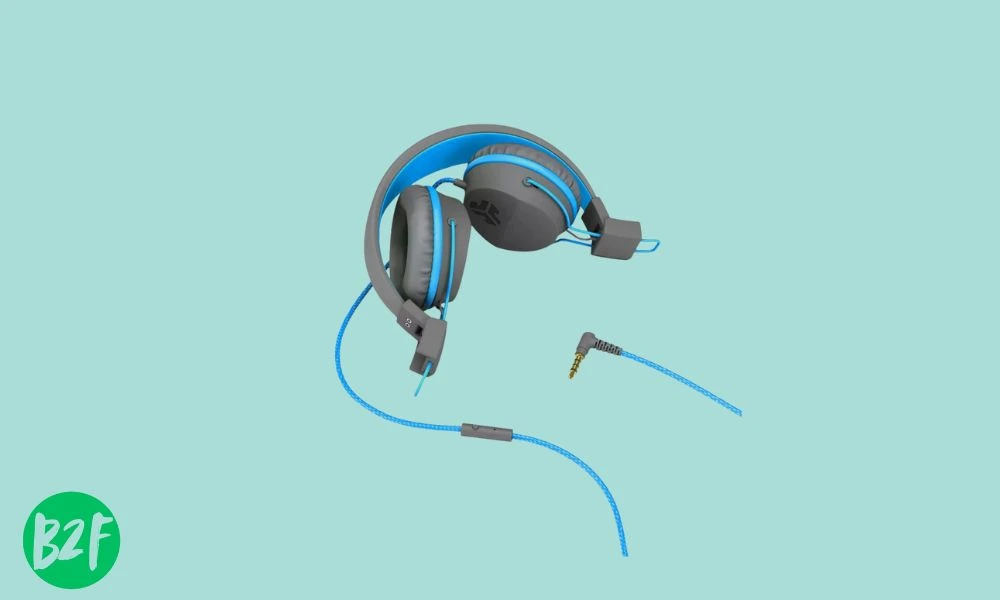
For a budget-friendly option, the JLab JBuddies Studio offers Bluetooth connectivity, a comfortable fit, and a range of kid-friendly features, including daisy-chaining.
These headphones are suitable for a wide age range and are ideal for travel due to their foldable design.
Pros:
- Affordable
- Bluetooth connectivity
- Comfortable fit
- Foldable design
Cons:
- No active noise cancellation
4. iClever Kids Headphones
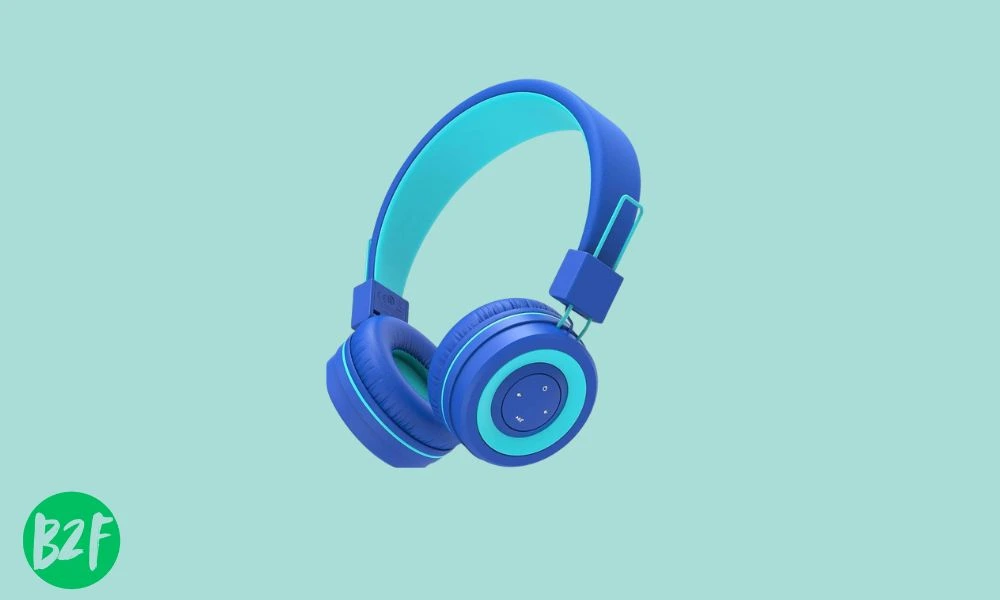
iClever Kids headphones prioritize safety with an 85dBA volume limiter and BPA-free materials. Their fun cat-ear design with RGB lights and cute patterns makes them a perfect gift.
They ensure comfort and longevity and have soft ear cushions, an adjustable headband, and a durable build.
The 40mm drivers provide clear, immersive sound, while the 3.5mm cable offers reliable compatibility with various devices.
Pros:
- Safe 85dBA volume limit protects children’s hearing.
- It has a cute design with cat ears and LED lights.
- Comfortable fit and adjustable headband.
- Durable build withstands rough handling.
- Good sound quality with clear audio.
- Compatible with various devices via a 3.5mm cable.
Cons:
- LED lights may drain the battery quickly.
- The volume limit can be too low in noisy environments.
5. JBL Jr 310 Kids Wired On-Ear Headphones
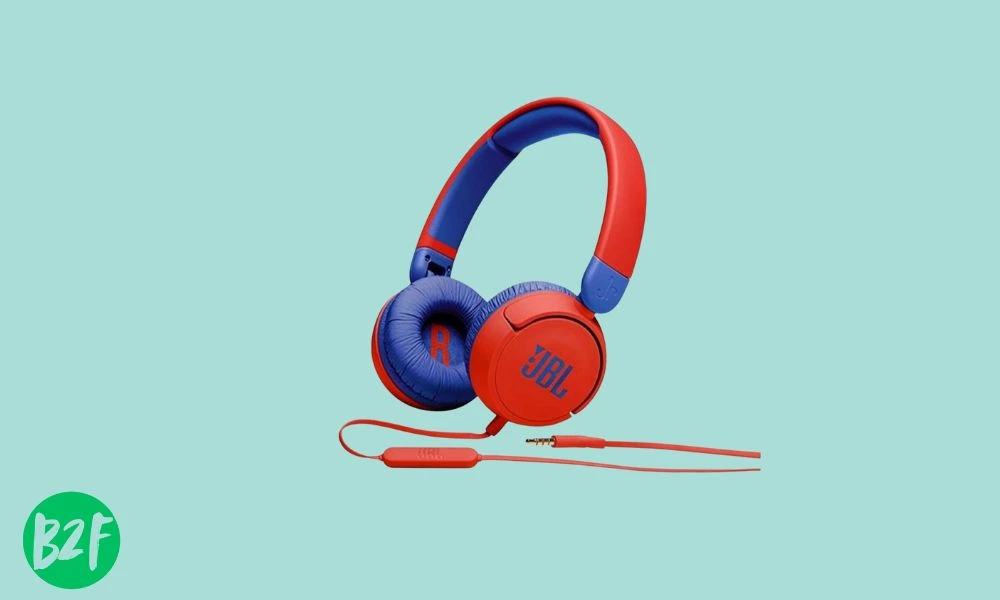
The JBL Jr310 headphones are safe, lightweight, and perfectly sized for kids, offering legendary sound tailored for young music lovers.
These headphones have a volume limit set to 85dB to safeguard hearing. They also come with an anti-tangle cable, mic, and remote.
The soft-padded headband and ear cushions provide comfortable listening, and each pair can be personalized with reusable stickers for added fun.
Pros:
- Good sound quality with volume limitation suitable for kids.
- Comfortable, lightweight, and secure fit.
- Durable and reliable for everyday use.
- Comes with fun, customizable stickers.
- Affordable and stylish design.
Cons:
- There is no built-in volume control adjustment.
- Reports of slightly flimsy construction.
Philips SHK2000BL/00 Light Headphones
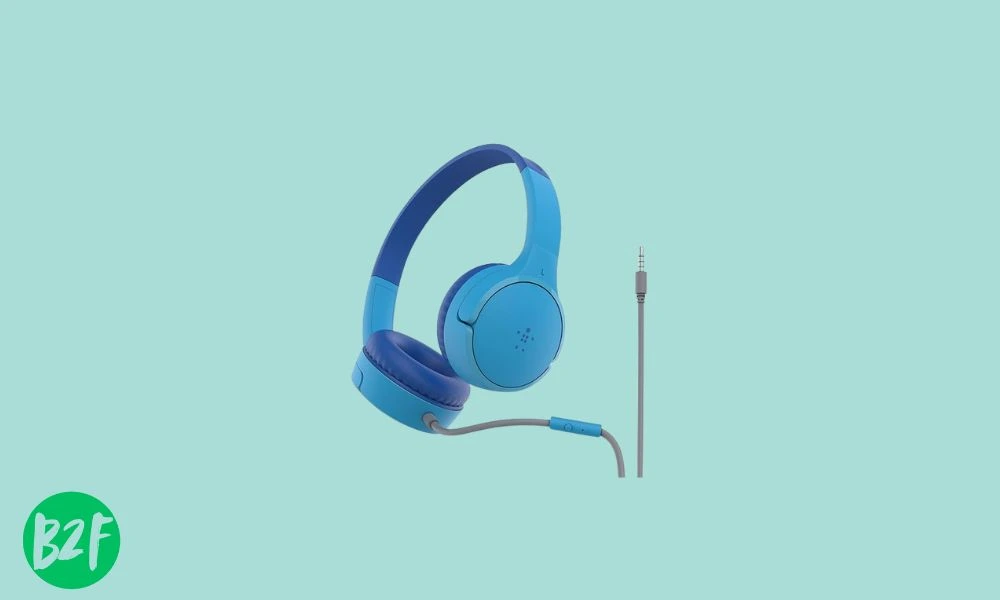
Specifically designed for kids, these PHILIPS headphones feature an LED panel on the ear cups that adds a fun, colourful glow.
The wireless, comfortable design offers up to 20 hours of playtime, perfect for long trips. A compact folding mechanism ensures easy storage and portability.
Additionally, the volume is capped at 85dB to safeguard young ears.
Pros:
- 85dB volume limiter for safe listening.
- Comfortable, cushioned on-ear design suitable for long use.
- Sturdy and lightweight build.
- Adjustable headband grows with the child.
- Vibrant, kid-friendly colors.
Cons:
- Limited noise reduction, not complete noise-cancelling.
Additional Considerations
When choosing the best toddler headphones for airplane travel, keep the following in mind:
- Age Appropriateness: Ensure the headphones are suitable for your child’s age group, as some models are designed specifically for certain age ranges.
- Ease of Use: Look for headphones with simple controls that your child can operate independently.
- Portability: Foldable designs are advantageous for travel, as they take up less space in your carry-on luggage.
- Design Preferences: Fun colors and designs can make the headphones more appealing to your child, encouraging their use during the flight.
Tips for Using Toddler Headphones on a Plane
To maximize the benefits of toddler headphones during air travel, consider the following tips:
- Test Before Travel: Before your trip, allow your child to use the headphones a few times at home to make sure they’re comfortable and know how to operate them.
- Download Content in Advance: Ensure you have age-appropriate movies, games, or songs downloaded on your device to avoid connectivity issues or reliance on in-flight entertainment.
- Pack a Charger or Batteries: If you choose wireless headphones, bring a portable charger or spare batteries to keep them powered throughout the flight.
- Bring a Backup Pair: If your budget allows, consider bringing a wired backup pair in case the wireless headphones run out of battery or experience technical issues.
- Adjust Volume Settings: Before handing the headphones to your child, double-check that the volume limiter is active and the sound level is set at a safe threshold.
Safety and Health Tips for Toddler Headphone Use
When it comes to air travel, the best toddler headphones are designed with noise-cancelling features that minimize ambient sounds, making flights more relaxing for little ones.
For young travellers, toddler and baby headphones for flying are crafted with comfort-focused designs and soft ear pads that prevent irritation during extended use. While toddler headphones are generally safe with built-in volume limiters, maintaining healthy listening habits is essential:
1. Monitor Usage Time
Even at a safe volume, prolonged listening can lead to ear fatigue or discomfort. Limit your child’s time using headphones and encourage breaks during long flights.
2. Maintain Moderate Volume Levels
Even with volume-limiting features, it’s wise to keep the audio comfortable. Teach your child to avoid increasing the volume if they find it difficult to hear; instead, use noise-cancelling headphones to block external noise.
3. Choose Content Wisely
Select engaging and age-appropriate content to keep your child entertained without the need for excessively loud audio. Educational programs, audiobooks, and children’s music playlists can be great options.
Final Thoughts
Choosing the best toddler headphones for airplane travel in 2024 requires considering safety, comfort, and functionality.
High-quality headphones can significantly improve your child’s travel experience by removing the stress of noise and discomfort.
Prioritize headphones with volume-limiting features, durability, and age-appropriate designs to keep your little one entertained and safe throughout the flight.
Investing in a pair that meets these criteria enhances your child’s listening experience and gives you peace of mind knowing that their hearing is protected.
FAQs
Q1: Are noise-cancelling headphones safe for toddlers?
Yes, noise-cancelling headphones are safe for toddlers when used correctly. They can help reduce the need to increase volume in noisy environments like airplanes, protecting your child’s hearing. Ensure the headphones have a volume limiter and that your child takes breaks from extended listening.
Q2: Can toddlers use wireless headphones safely?
Absolutely! Wireless headphones can be safe for toddlers, providing they have volume-limiting features and a comfortable fit. Wireless options also reduce the risk of accidental tangling or pulling, making them ideal for aeroplane travel.
Q3: How do I clean my child’s headphones?
Most toddler headphones have easy-to-clean surfaces. Use a gentle, damp cloth to wipe down the headband and ear cushions, avoiding harsh chemicals that could damage the material. Regular cleaning ensures hygiene and prevents the spread of germs, especially after travel.
Q4: What is the ideal age range for toddler headphones?
Toddler headphones are typically designed for children aged 2–8. However, checking each product’s specifications is essential to ensure it suits your child’s age, head size, and comfort level.

